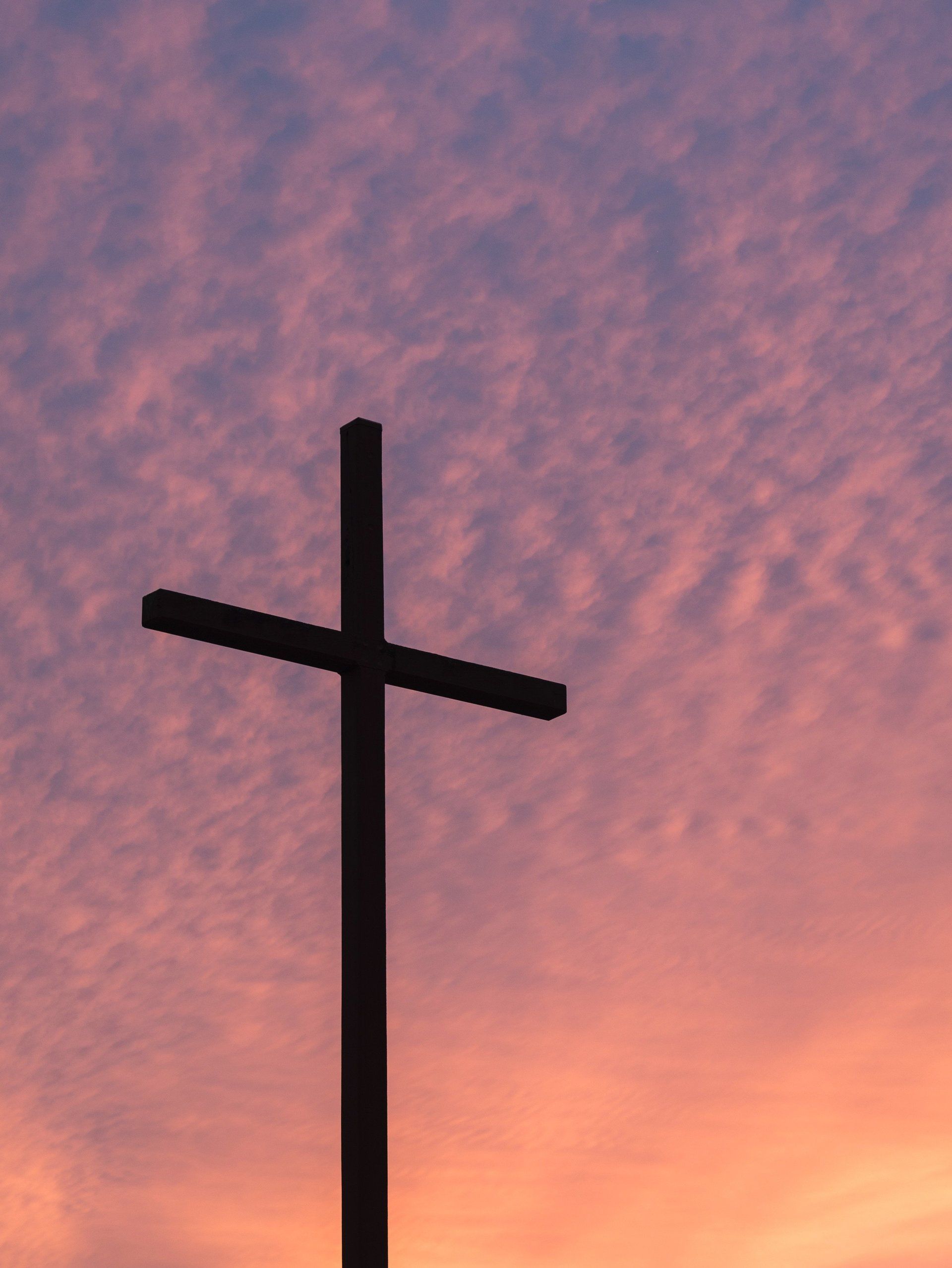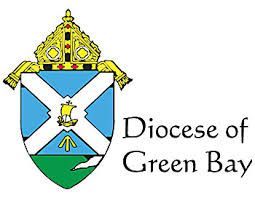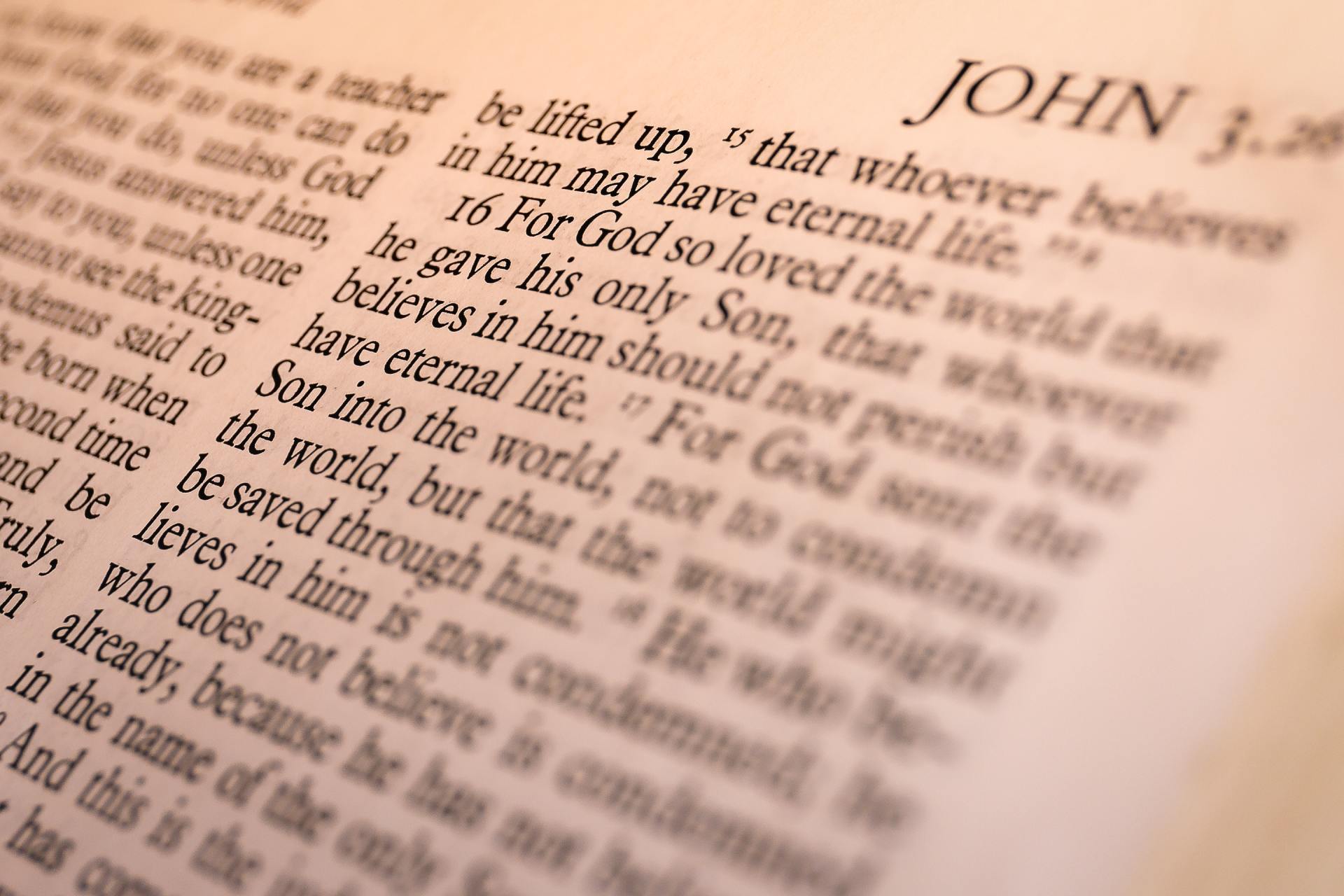Welcome to St. Lawrence Church - Navarino, WI
St. Lawrence Catholic Parish is located on Hwy 156 in the small town of Navarino.
St. Lawrence Parish heartily welcomes all worshipers and encourages those without a spiritual home to consider becoming a member of our congregation. May you feel blessed here.
We strive to be a loving church family and invite you to join us. We are a welcoming Catholic community called by God to live out the message of Christ in love and service to all people.
Upcoming Events
Masses
Sunday: 10:00am
Confession: By Appointment

by Colleen Pressprich While some children are raised on the Jesse Tree, I was an adult the first time I encountered one. In fact, I only stumbled upon it by chance while researching Advent activities for my classroom. I was immediately enamored and wondered why I had never heard of this tradition before. Not having a book or rubric, I was left to figure it out myself. But having the boundless energy of someone in her twenties, over the course of a weekend I handmade a set of ornaments out of odds and ends from my mother-in-law’s sewing room. That December I told a Bible story from memory each morning during “circle time,” and my students took turns hanging my homemade ornaments on our classroom Christmas tree. What is the Jesse Tree? Put quite simply, the Jesse Tree is the family tree of Jesus . It traces the lineage of Christ all the way back to Adam and Eve. In other words, the Jesse Tree connects the dots between the Old Testament and the New. It shows us (and our children) that God has been planning since the fall of Adam and Eve to bring us back to him through the Incarnation of his Son, Jesus. he Jesse Tree combines visual and storytelling elements like other family trees. Jesse Trees first appeared in the Middle Ages, a time when most people were illiterate and the invention of the printing press had not yet made Bibles readily available to Catholics in the pews. Faith was largely passed on orally. Through paintings, stained glass windows and carvings, theologians and artists worked in tandem to teach men and women of all ages the story of salvation history through the Jesse Tree. The pictures of people and the symbols used with them helped tell the Bible stories by assigning illustrations to the words. The Jesse Tree window in the Cathedral of Our Lady of Chartres in Chartres, France is a particularly famous and majestic example, but many Jesse Trees were more modest in stature in keeping with their location in a simple parish church. Through paintings, stained glass windows and carvings, theologians and artists worked in tandem to teach men and women of all ages the story of salvation history through the Jesse Tree. The Jesse Tree is named for the father of King David, a relatively obscure figure of the Old Testament who vaulted to prominence with the prophecy of Isaiah, which states that “Then a shoot will spring from the stem of Jesse, And a branch from his roots will bear fruit” ( Is 11:1 ). The verse refers to the coming of the Messiah from the family of King David. Other than this oblique reference to him, what we know about Jesse the historical figure comes largely from the Jewish tradition, which has much more to say than is found in the Bible. Tradition tells us that Jesse was a well-respected man whose great faith was recognized during his lifetime. His familiarity with the prophet Samuel — the man who would anoint David as king — indicates his stature in the community. And yet, even Jesse had more to learn. He didn’t understand Samuel’s anointing of his youngest son, failing to recognize that God looks not at outward appearances but rather “sees the heart” ( 1 Sam 16:7 ). His mention as the foundation of the lineage of Christ reminds us today that the faithful can still go deeper. How does it work? Over time it became tradition to review the family of Christ each Advent as a way of showing God’s intentionality in preparing for the Incarnation and helping us, his people, prepare our hearts for the celebration of Christmas. The modern Jesse Tree is designed to be used at home (or at school) during the month of December. Each day a single story is told from salvation history, and an ornament (containing the symbol for that person or event) is hung on either the Christmas tree or a special, separate “Jesse Tree” (these usually have bare branches that are then adorned throughout the month). Jesse Trees today contain many of the same elements of the historical Jesse Trees. There is a combination of the visual (ornaments and illustrations in books) and oral storytelling. However, these are now aimed at catechizing children instead of adults, who have the words of a book read to them. Coming back into popularity in the last decade, Jesse Tree books and ornament sets have made home use possible and easy for families. Why are there so many versions? Happily, many different Jesse Tree versions exist today. Most take the form of books (though Catholic artist and creator Jen Frost has a stunning Jesse Tree quilt pattern and weaves in traditional elements and meditations) and corresponding ornaments. But even though most use the same medium, every Jesse Tree is different. There are many reasons for the variety. First, most Jesse Trees rely in one way or another on the lineage of Christ found at the beginning of the Gospel of Matthew. It is a long lineage with three sets of 14 names each. And just like the paintings and stained glass versions of previous centuries depending on how large a space the artist had to work with, the Jesse Tree tradition of today is constrained by time. There are 24 days in December before Christmas, with more than 24 names to choose from! There are also many ways to approach the goal of telling the story of salvation history. Some Jesse Tree books focus less on the lineage and more on the prophecies that announced Christ’s coming to the Israelites. These Jesse Trees include figures like Samuel, Jeremiah and Isaiah, men of great importance but not of Jesus’ direct line. Some Jesse Trees focus on events — the fall of man, the flood of Noah and the tower of Babel. These books are arranged to tell the major stories of biblical history and how they affected the larger population. They are often less concerned with the individuals. Other Jesse Trees do focus on the people of the lineage of Matthew, but they try to tell the whole story of the person, attempting to condense a lifetime into a few short paragraphs. After falling in love with the tradition as a young woman, I knew that it was something I wanted to incorporate into my family’s Advent. But I just couldn’t find a pre-existing version that worked for us. None of the already mentioned ways of approaching the Jesse Tree are wrong, they just didn’t resonate with my kids like my oral stories did in the classroom. With the encouragement of my editor, I began writing my book, “The Jesse Tree for Families,” with a specific vision in mind. I realized the answer was simple in thinking about what had grabbed my students’ attention and what would grab my own children’s attention. The same thing captivates them in almost every area of their lives and made many of the original Jesse Trees of medieval times captivating — people and relationships. Children are relational beings, their world is small and primarily family-focused. To engage children, I knew I needed to go back to the beginning and center the telling of salvation history on the people and the families in each story. So in my book, the meditations for Dec. 1 through Dec. 16 focus on a person from the family of Jesus, but it does so by looking at a single moment in time. I chose moments that were pivotal to that person, life-changing moments where they encountered God or set their feet onto the path God had laid out for them. The daily reflections are a snapshot, a window into their personality and how God worked in their life. I wanted my kids to feel like they were meeting someone, getting to know a friend. I chose to finish December with the O Antiphons , another great Catholic Advent tradition, to help families further dive into the life and prayers of the Church. The O Antiphons are names of Jesus that are found in the book of Isaiah. They have been used in the Church since the eighth century and are traditionally added to Mary’s Magnificat during Evening Prayer of the Liturgy of the Hours . Each is a title that tells us something about who Jesus is and what his relationship to us is. Using the O Antiphons to close out the Jesse Tree moves the focus to Christ while still keeping the overarching theme of relationships and encounters. Why the Jesse Tree matters There are countless Advent traditions in the Catholic Church, but for me, the Jesse Tree is one of the richest. I have found that it produces fruit year in and year out. The more years I have used the Jesse Tree, the more I have come to love and appreciate the treasure that it is. There are so many reasons to use a Jesse Tree with your family, whether you have young children in the home or not. If you do have kids, the concrete elements of seeing the illustrations (in my own book, each meditation is accompanied by a full-page portrait of the person, further showcasing their personality) and the symbols on the ornaments, and the act of hanging that ornament on the tree each day, roots them in the stories. Maria Montessori, a Catholic herself, said, “What the hand does, the mind remembers.” Much of her educational method is grounded in the understanding that children need to move from the concrete to the abstract in their process of internalizing knowledge. Using items children can see, touch and manipulate makes the topic more real. For us adults — and older children and teens — the Jesse Tree offers an opportunity to return to what might be well-worn stories with new eyes. Though we may have read them a hundred times before, new insights are always available to us because, as the living Word of God, the Bible is meant to speak to our hearts today. Goodness knows that has been true for me. While going through the writing process, I was struck anew by quite a bit. Moses in particular I saw from a new perspective, touched by his lack of self-confidence. Whereas in the past, I had always paid most attention to his role in the plagues that tormented Egypt, this time, I noticed how many times he told God no, that he wasn’t good enough. I realized how much his stutter must have affected him, how completely isolated he had been from the people he was meant to lead. In the story of Moses , I confronted my feelings of inadequacy and the imposter syndrome that too often stalks my steps. Though we may have read them a hundred times before, new insights are always available to us because, as the living Word of God, the Bible is meant to speak to our hearts today. The men and women included in Jesus’ family tree aren’t always who we’d expect, not even those we think we know well. Some of the figures included are giants of the Old Testament. Others are more easily overlooked. Most of us would assume that the lineage of the Messiah would be full of kings, the wealthy, the powerful and those with clear, royal or unblemished bloodlines. Instead over and over again we find outsiders, men and women who didn’t quite fit — the outcast, the rebel, the not-quite-so-honest — all who have their place in the story of salvation. For me, the opportunity to return to the Jesse Tree each Advent is an opportunity to dig a little deeper into their stories and as a result my own. I have found that the better I know the members of the family of Jesus, flawed as they are, the more open I am to the possibility that God might be seeking to work within my own flawed life, which of course, he is. And in meditating on and learning about these figures together, the Jesse Tree offers family members an opportunity to become more comfortable in sharing their personal faith and prayer lives with their loved ones. As we each interact with these men and women through their stories, we can be affected by different aspects of their lives. In sharing those insights (in my own book this is facilitated by simple conversation starters to get the ball rolling), parents can gain an understanding of what their children are learning, praying about, or struggling with. Spouses will find the chance to communicate on important topics within their marriage. Children will get to see their parents in new ways — as people with identities as daughters and sons of God and faith lives of their own, separate from just being Mom and Dad. A devotion for families When I was writing my Jesse Tree, I wanted to make the process even more accessible to families. Growing up, my family was culturally Catholic, and our Christmas celebrations — though joyful — were largely secular and never included Advent. Cognizant that my first encounter with this tradition didn’t happen until adulthood and knowing that there are plenty of parents who, like me, weren’t raised in Catholic homes and might feel some trepidation about trying to explain to their children what is entirely new to themselves, I included in my book a section called “Notes for Parents.” It offers back stories, context and even advice on approaching some of the more complicated topics in the lives of the people presented. The goal is to make the process as doable as possible. I’m not ashamed to admit that I love the Jesse Tree tradition because it is realistic for my busy family to accomplish. Which brings me to my final reason for loving the Jesse Tree — it’s easy. I’m not ashamed to admit that I love the Jesse Tree tradition because it is realistic for my busy family to accomplish. I don’t mean to imply that the tradition is light or fluffy. There’s plenty of depth to each of the short meditations. But it is an open-and-go activity that doesn’t (at least now that the book is written) require a lot of planning and preparation on my part, which means that if a day has gone off the rails (a very real possibility with five kids), we’ll still have participated in the season. December is a busy month for my family, as I know it is for many others. Advent is such an important season in the life of the Church, and I want my children to experience that at home. Making the Jesse Tree the tradition of our family gives my husband and me a touch point with our kids daily. It ensures that we prepare their hearts to receive the savior when Christmas comes. This article comes to you from Our Sunday Visitor courtesy of your parish or diocese.

by Scott P. Richert When my sisters and I were young, my mother would spend all of Advent baking cookies and making candy. That may hardly seem remarkable; after all, countless millions of Christmas cookies are baked and consumed every year between Thanksgiving and Christmas Day. But my mother didn’t eat any of the cookies she baked, and neither did we — not before Christmas, that is. Every sugar cookie, Polish wedding cake, fruit cookie, square of fudge, and chunk of peanut brittle was packed away in vintage green Tupperware or metal tins (depending on whether they were intended for us or for relatives and friends), to be brought out only once Christmas Day had dawned. Four or five decades later, that seems remarkable, because what economists call “delayed gratification” is simply not part of American life anymore — and that’s as true of Catholics and other Christians as it is of the average American. Fifty years ago, the question “What do you want for Christmas?” meant something different than it does today, when a couple of clicks on Amazon can satisfy the desire of a child of any age with next-day (or even same-day) delivery. When I was a child, I thought as a child, which meant that, of course, I wanted to eat just one sugar cookie hot out of the oven, or sneak one piece of fudge. But Mom never let me do so, because satisfying my desire wasn’t the point of her baking. In fact, if anything, the purpose of all of her preparations throughout Advent was the opposite: to increase my desire, and to direct it toward its proper end. If you eat it before Christmas, a Christmas cookie is just a cookie. A bigger lesson My mother entered into eternal life in the early morning hours of Nov. 1, All Saints Day. Through the days and nights before she quietly passed from us, my father and my sister Monica and I held those hands that had mixed and shaped and baked all of those cookies just a few feet away from where the hospital bed was set up in the living room of the house that had been our family home for all but a handful of months of my parents’ 56 years of marriage. Polish wedding cakes and peanut brittle were the last things on our minds as we prepared ourselves and one another for a life without her. But a few days later, when Father Charles Hall, the priest who had anointed Mom seven weeks earlier and who would celebrate her funeral Mass on Nov. 6, asked us for a particular memory of Mom that would help him to understand who she really was, the first thing that came to mind was her Advent baking. Everything we do reveals something about where our heart lies. Too often, by necessity as much as by choice, we are caught up in the here and now. There’s work to be done, bills to be paid, clothes to be washed, children to be fed. But as much as necessity may seem to force our hand, there’s an element of choice in our actions as well. And that choice involves not simply what we do but why we choose to do it. I do not know, and of course, I cannot ask her now, whether Mom intended to teach us a lesson with her Advent baking. But as we talked with Father Charles, we realized that she had done just that. To be a Christian means to live always with a sense of longing, of that joyful expectation tinged with sorrow that comes from knowing that the greatest desire of our heart will never be fulfilled in this earthly life. That, perhaps more than any other part of the Christian experience, is a reality that the modern world rejects. A few hours after our mother passed from this life, my sister and I stood beside our father in the church where we had first received the gift of faith, and we sang with all the saints in glory of the life yet to come. And as we prayed for the repose of my mother’s soul, we gave thanks for the years we had spent with her, and for the cookies and candy through which Mom had prepared us all for living that day and the rest of our lives in the deep longing for, and joyful expectation of, our reunion before the throne of God. This article comes to you from Our Sunday Visitor courtesy of your parish or diocese.











